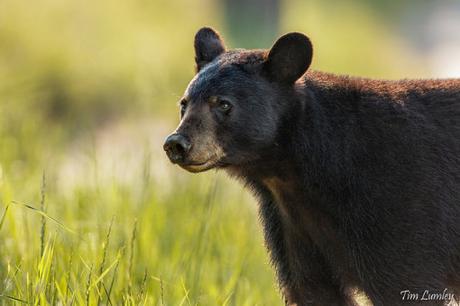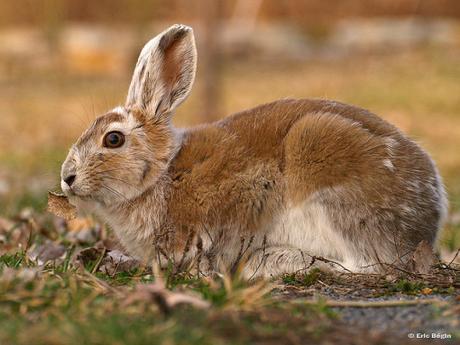In the Taiga Biome, the winter is cold and long and the summers are cool and short. Winter temperatures are often as cold as -14 degrees F, while summer temperatures average 64 to 72 degrees. As one might imagine, the winters are usually filled with snow. During the summer, heavy rain is expected. Weather temperatures greatly fluctuate in the Taiga Biome. What might be pleasant weather during the day can change within the blink of an eye and the temperatures can become very cold and treacherous. In the winter, the strong winds that accommodate the weather can make living in the area nearly impossible.
Approximately 29% of the world’s forests are made up of the Taiga Biome, located in both North American and Eurasia. These forests and wooded areas make great homes for many different animals and plants. Despite the cold temperatures found nearly year-round in the Biome, a number of plants and animals live in the Biome. These animals are unaffected by the temperatures, and have many special features that help protect them from the harsh environments.
Animals which may be found living in the Taiga Biome include:
· Wolverine
· Moose
· Foxes
· Bears
· Birds
In the Taiga Biome, you’ll find around 300 different bird species. These birds feed on insects during the summer months, but most migrate when winter strikes. During the winter months, only about 30 bird species remain in the Biome. Many of these birds are unable to sustain the harsh winter temperatures.

Most of the animals found within the Taiga Biome are prefatory animals, or animals that feed upon other animals for survival. Many of these animals are also able to change their color, which allows them to camouflage themselves from danger. Let’s take a look at some of the animals found within this area.
1. American Black Bear
The American Black Bear is one animal that is able to call the Taiga biome home. The bear has the following characteristics:
- American Black Bears eat many different plants, leaves and twigs.
- The American Black Bear consumes only small prey and carcasses that have been left over from other animals. In fact, only about ¼ of his diet is animal.
- The American Black Bear hibernates during the winter.
- This bear can run as fast as 25 mph
- American Black Bears vary in size from 220 – 600 pounds
- This bear mates during the summer and gives birth to their offspring during January or February
- The male American Black Bear does not care for the offspring. Instead, the bear leaves to mate again.
- The average lifespan for the Black Bear is about 25 years
2. Bald Eagle
The Bald Eagle is one of the many bird species that reside in the Taiga Biome. The Bald Eagle has a white head and weighs from 8 to 12 ponds. Here are some other important details about this bird:
- The Bald Eagle has a wingspan that can reach up to 7 feet
- Approximately 80% of all Bald Eagles reside in Alaska, although they are found throughout the Biome
- The nest of a Bald Eagle is built inside of a tree, on cliffs and even on the ground. The Bald Eagle will change the shape of the next in order for it to fit in a particular tree.
- Bald Eagles have exceptional vision. Their vision helps them hunt their prey.
- Bald Eagles consume dead animals as their main source of food. In addition, they also eat fish and chicken that are live.
- Bald eagles hunt in pairs
- Bald Eagles do not need to eat every day.
- The Bald Eagle is considered an endangered species
3. Bobcat
The Bobcat is an animal that lives deep within the forest, swamps, and mountains that make up the Taiga Biome. The animal, a part of the cat family, averages around two foot in length. Other important information about the Bobcat:
- Bobcats can weigh between 12 – 23 pounds.
- The Bobcat changes its fur color on two separate occasions during the year. In the winter, the Bobcat is striped and tawny gray in color. During the summer the Bobcat changes to a reddish brown color.
- The sharp teeth of the Bobcat are used to kill pretty. It is easy for the Bobcat to cut through its pretty thanks to these razor like teeth.
- A Bobcat can run as fast as 30 miles per hour although the cat would rather walk than run
- Bobcats keep separate territory, although a male may have up to three females living within this area
- Bobcats eat game birds, rabbits, mice and squirrels
4. Gray Wolf
The Gray Wolf thrives in cold environments. It is the largest canine in the world. Other Gray Wolf facts you might be interested to know:
- The Gray Wolf is approximately 3 foot tall and 3 to 5 foot in length
- The coat of the Gray Wolf is wooly which prevents moisture in the skin and protects it from the cold temperatures.
- A Gray Wolf can hear 20x better than a human
- The smell of a Gray Wolf is more than 100 times sharper than a humans
- Wolves are unable to see color
- This wolf can run at speeds of about 40 miles per hour
- The average lifespan for a Gray Wolf is 17 years.
- Wolves live together in packs. They are very protective of one another.
- As a carnivore, a wolf will eat a variety of animals, including deer and moose. If food is scarce, the wolf will also eat rodents.
- A wolf can eat as much as 22 pounds of food during one meal
- Humans are the only threat to a wolf.
5. Wolverine
The Wolverine is also an animal that calls the Taiga Biome home. The Wolverine reaches a height of about 87 cm with a weight up to about 45 pounds. The Wolverine resembles a bear. Here are additional facts about the Wolverine:
- The Wolverine is a member of the weasel family.
- It is the largest member of the weasel family
- The Wolverine is very strong and powerful
- The Wolverine has jaws so strong it’s able to bit through both a bone as well as meat that is frozen
- The keen sense of smell possessed by the Wolverine help it to hunt its prey
- Wolverines are carnivores that feed on fish, birds, reptiles and rodents
- Wolverines are very shy animals. They do their best to avoid contact with humans, and most of the time, other animals.
6. River Otter
The River Otter lives in areas of the Taiga Biome that are thick with woods and lakes, swamps and nearby rivers and ponds. The River Otter has a tail that is between 16 – 18 inches in length, and the animal weighs 10 – 35 pounds. Other facts about the River Otter:
- The coat of a River Otter is usually about 2 ½ inches thick
- The River Otter has two types of fun. the outer coat protects the second set of inner fur from other animal as well as the extreme weather conditions found in the Taiga Biome
- The River Otter can see above water while they are swimming
- Foxes and wolves hunt River Otters
- The omnivore animals feed on a diet consisting of small mammals, shellfish, regular fish and beetles and snails.
- The River Otter is a common animal found in Canada but it is endangered in North America
- River Otters can survive only where water and fish are healthy. When otters are healthy, it is a good indication that the environment around them is also safe.

7. Snowshoe Rabbit
The snowshoe hare lives across most of the north American taiga and even farther south. Here are few other facts about Snowshoe Rabbit:
- It is larger than the rabbit and weighs three to four pounds as an adult and its size can be between 36 – 52 cm.
- This animal has thick dark-brown coat that turns white in winter.
- They have three to four litters a year with one to eight in each litter.
- The Snowshoe Rabbit can run up to 27 mph and jump 10 feet in one hop.
8. Moose
The Moose is the largest animal in the taiga and largest member of the deer family. Here are few facts:
- Moose are found in northern forests in North America, Europe, and Russia.
- Their thick coats keep them warm in winter.
- The moose is about 7.5 feet (2.3 m) tall.
- Moose eat willow, birch, and aspen twigs, horsetail, sedges, roots, pond weeds, and grasses.
- They have long legs that helps them moving in the deep snow.
9. Great Horned Owl
The Great Horned Owl is found in southern parts of the North American taiga.
- This owl is 18 to 25 inches (46-64 cm) long and its weight averages about 3 pounds (1.5 kg).
- The Great Horned Owl is mostly active at night and survive on mammals like rabbits, skunks, woodchucks, mice, rats, ducks, quail, and fish.
- Their excellent sight helps them to find prey in dark and acute sense of hearing helps them to find prey below the snow.
10. Brown Bear
There are three subspecies of Brown Bear. In North America, it is the Grizzly Bear and the Kodiak Bear. In Europe and Asia, it is the Eurasian Brow Bear.
- Brown bears are found in North America, Europe, and Asia
- They are up to 7 feet (2.1 m) long and weigh up to 1,500 pounds (680 kg).
- They eat plants, roots, berries, fungi, fish, small mammals, and large insects.
This list of animals is only a small portion of the animals that call the Taiga Biome home. The Canadian Lynx, Red Fox, Long Eared Owl and many others also adapt to the cold weather and extreme conditions of the biome and call the area home. During the summer, the biome is also home to many different insects.

